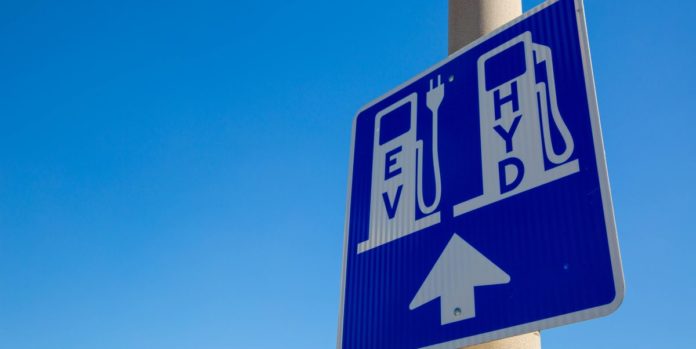- Four government agencies—the Departments of Energy and Transportation, plus HUD and the EPA—said last fall that they would work together to create more clean and accessible transportation across the nation by 2050. This week, they released the U.S. National Blueprint for Transportation Decarbonization, with details on how this will happen.
- Redesigned cities and communities and better public transportation are part of the plan, but the biggest reductions in emissions will come from cleaning up the vehicle fleet.
- The agencies see three main fossil fuel alternatives in our future—electricity, hydrogen, and sustainable biofuels—but they have wildly different use cases.
Last fall, the Departments of Energy, Transportation, Housing and Urban Development, and the Environmental Protection Agency announced they will work together to create a “clean, safe, accessible, equitable, and decarbonized transportation system for all.” This week, the agencies released their promised blueprint that puts some details on those bones.
Called the U.S. National Blueprint for Transportation Decarbonization, the first-of-its-kind document envisions three familiar technology solutions for net-zero travel by 2050: batteries, hydrogen, and sustainable liquid fuels. It’s how the blueprint predicts these three technologies will be used that is most interesting, if not exactly surprising, for drivers. The technology with the “greatest long-term opportunity” to decarbonize light-duty vehicles, for example, is battery power. For long-haul heavy trucks, hydrogen is at the top of the list. And sustainable liquid fuels are likely best for boats and planes.
More interesting, perhaps, is that the agencies do not see a place for hydrogen in the light-duty vehicle fleet. While hydrogen is considered to have limited opportunity to green up short-haul heavy trucks and off-road vehicles, the blueprint’s chart doesn’t even support that bit of optimism for passenger cars. Despite the fact that the blueprint lists establishing a clean hydrogen infrastructure as one of the research priorities for the country, it will not help clean up our daily drivers, apparently.
Changing the Way Cities Look?
The 88-page National Blueprint addresses more than energy types, including rethinking how local communities are laid out so that “job centers, shopping, schools, entertainment, and essential services are strategically located near where people live. Communities like this will reduce the amount of time people spend commuting, among other benefits. Making public transportation and trains more reliable and affordable is also in the plan, but the biggest carbon reduction improvements will happen in cleaning up the transportation options themselves.”
With this second major step in the decades-long decarbonization plan now complete, the four agencies also provided a general outline for that milestones that are planned for the coming decades as the U.S. moves to a net-zero economy. Between now and 2030, it’s research and investments to support deployment. In the 2030s, the clean transportation solutions will scale up, and in the 2040s, we will be “Completing the Transition.” That’s the plan, anyway.
This content is imported from poll. You may be able to find the same content in another format, or you may be able to find more information, at their web site.

